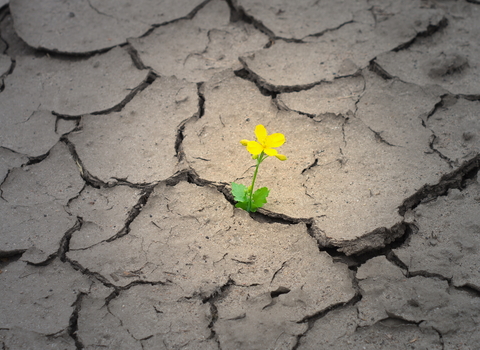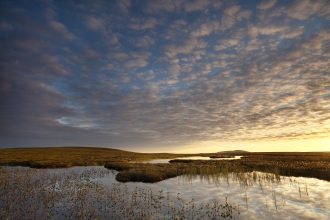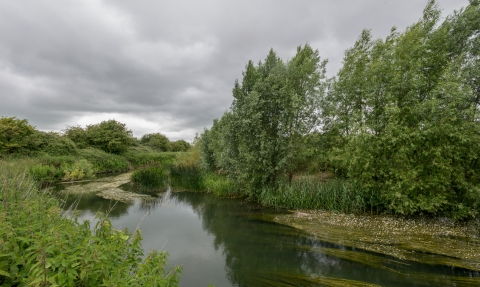
Chimney meadows by Andrew Marshall Go Wild Landscapes
Nature based solutions
Nature: the natural solution to tackle climate change now
Did you know that investing in nature could help tackle the climate crisis? And that right now nature based solutions could deliver more than 30% of the emissions reductions needed by 2030?
The Wildlife Trusts have published a report Let Nature Help – how nature’s recovery is essential for tackling the climate crisis. Drawing on the latest research, the report shows how a variety of natural landscapes in the UK can store carbon and could absorb a third of UK emissions if these degraded habitats were to be expertly restored. It makes the case for addressing the climate and nature emergencies together, head on.
It is now clear that we cannot tackle the climate crisis without tackling the nature crisis – the two are inseparable. The climate crisis is driving nature’s decline while the loss of wildlife and habitats leaves us ill-equipped to reduce our emissions and adapt to change. It makes no sense to continue destroying natural habitats when they could help us – nature’s fantastic ability to trap carbon safely and provide other important benefits is proven.
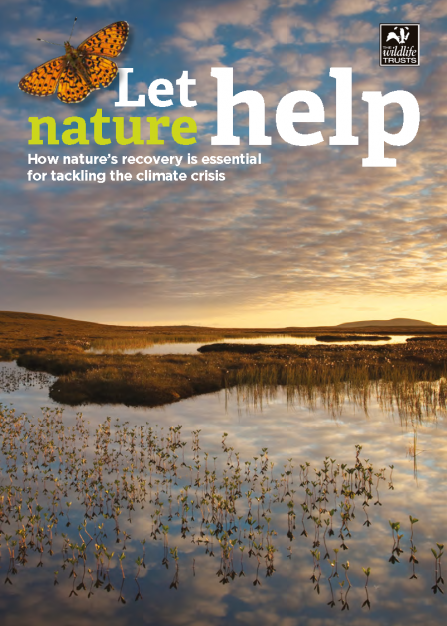
Read the report to find out more about:
- Nature-based solutions
- Case studies
- How our land and seas can be managed to tackle the climate crisis
How can nature help?
Natural habitats have an incredible ability to trap carbon safely, to reduce carbon emissions, and to protect people and wildlife from the impact of climate change.
The Wildlife Trusts know from experience that restoring nature can help soak up UK emissions whilst also contributing many additional benefits. For example, better natural habitats reduce the risk of flooding, help prevent coastal erosion, improve people’s health and ensure we have thriving ecosystems which provide the pollinators, soils, food and water which sustain us. Nature is, itself, at risk from climate change – yet its potential to store carbon means it can help us address climate catastrophe.
In the UK there are many habitats that when protected or restored can store carbon. Woodlands, peatlands, and grasslands all have a role to play. Even sustainably managed agricultural land can help store carbon through the production of healthy, carbon-rich soils, and the creation of lush habitats like meadows, trees and hedgerows amongst fields. Our Let Nature Help report outlines key habitats that will store carbon if restored.
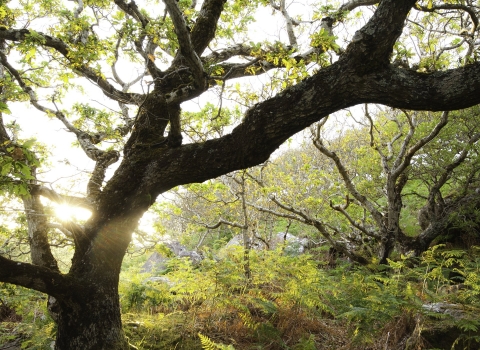
Woodlands
About 1 billion tonnes of carbon are locked up in UK woodlands, mostly in the soils. Planting more woods could lock up more carbon, but this must be carefully planned to maximise benefits and avoid harming other habitats. We need to protect our existing woodland and help it to expand and join up and we’re calling for 40% more hedgerows to help reach net zero by 2050.
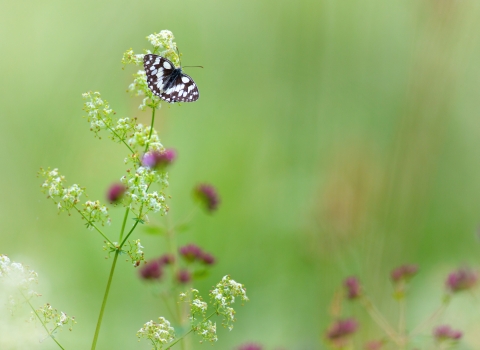
Marbled white in grassland by Jon Hawkins - Surrey Hills Photography
Grasslands
UK grasslands store 2 billion tonnes of carbon, but this is vulnerable to disturbance. Between 1990-2006, arable conversion of grasslands released 14 million tonnes of CO2. We can restore species-rich grasslands to lock up carbon and support abundant wildlife.
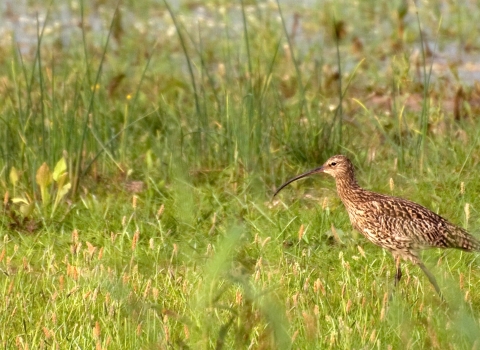
Curlew by Zsuzsanna Bird
Wetlands
Wetlands can accumulate carbon for centuries, but in some areas of the UK we have lost over 90% of our wetland habitat. Restored wetlands provide rich habitat, clean water naturally and reduce flood risk downstream. Less drainage and over-abstraction, the return of beavers and naturalising rivers will lock up more carbon.
Healthy ecosystems can absorb vast quantities of CO2 from the atmosphere and lock it away as carbon.
However, human activities such as intensive arable farming, overgrazing, and irresponsible development release this stored carbon and drive nature’s decline. As a first step, we urgently need to protect important ecosystems so their carbon isn’t released and they can continue to absorb CO2. We also need to put nature into recovery across a third of our land, so the natural world can cope with the climate change that is already happening and contribute effectively to stabilising it.
Doing this across a mosaic of connected habitats will also deliver countless other benefits, including flood prevention, coastal defences, healthier lives and natural resilience.
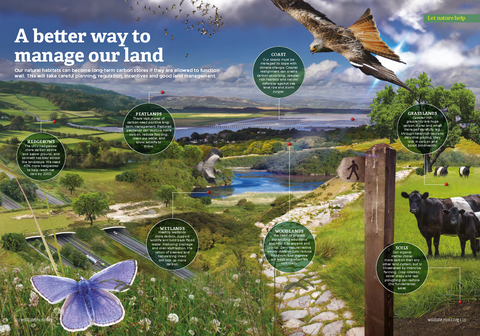
The time is now
Nature's incredible ability to trap carbon safely and provide other important benefits is proven. But nature in the UK is in a sorry state. Important habitats are damaged and declining. We must fix our broken ecosystems, so that they can help to stabilise our climate.
At BBOWT, we have a big part to play in protecting these habitats. Our volunteers and staff look after over more than 80 nature reserves, including precious floodplains, wild flower meadows and ancient woods which store carbon and where wildlife thrives. We also restore habitats in our reserves and in the wider countryside, helping to lock up carbon.
We are ramping up our conservation activities beyond our nature reserves, to our Living Landscapes and the wider countryside. We are investigating new ways of working with landowners to deliver nature based solutions in Berkshire, Buckinghamshire and Oxfordshire. This will help us restore nature at landscape-scale, to help halt the loss of British wildlife, and at the same time contribute to tackling the climate crisis.
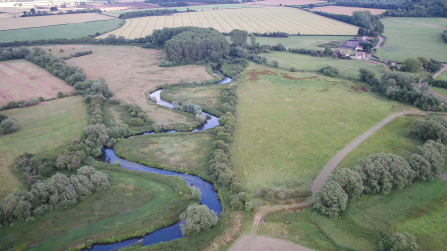
Aerial view of Duxford Old River and Chimney Meadows by Phill Pentecost AVP
BBOWT’s very own nature based solution at Chimney Meadows
BBOWT's Chimney Meadows Nature Reserve, at the heart of the Upper Thames Living Landscape, is a prime example of how conservation can restore functioning landscapes and help in the fight against climate change.
How you can work with us
Local organisations and businesses
If you’re a local organisation with a climate, carbon reduction, or tree planting commitment – please get in touch to discuss local nature based solutions projects that can help meet your commitments.
Local authorities
If you work in a council, please use our top 10 climate tips to help influence what your council does for nature and climate.
You can also get in touch with us to find out more about how your local authority can help tackle the nature and climate emergencies.
Individuals
If you want to make nature-friendly changes in your own back yard, we've got lots of tips for welcoming wildlife into your garden.
You can support our ongoing work protecting and restoring vital habitats to help restore nature by becoming a member.

